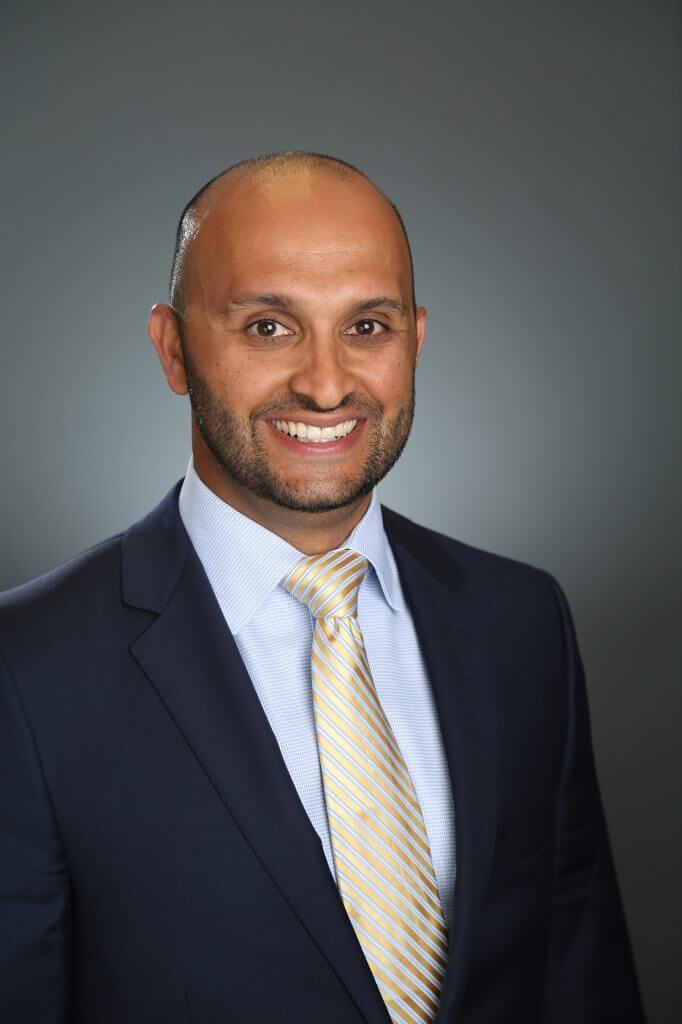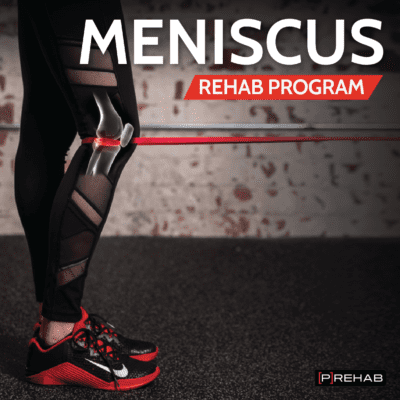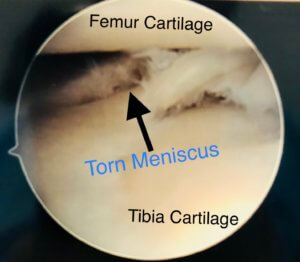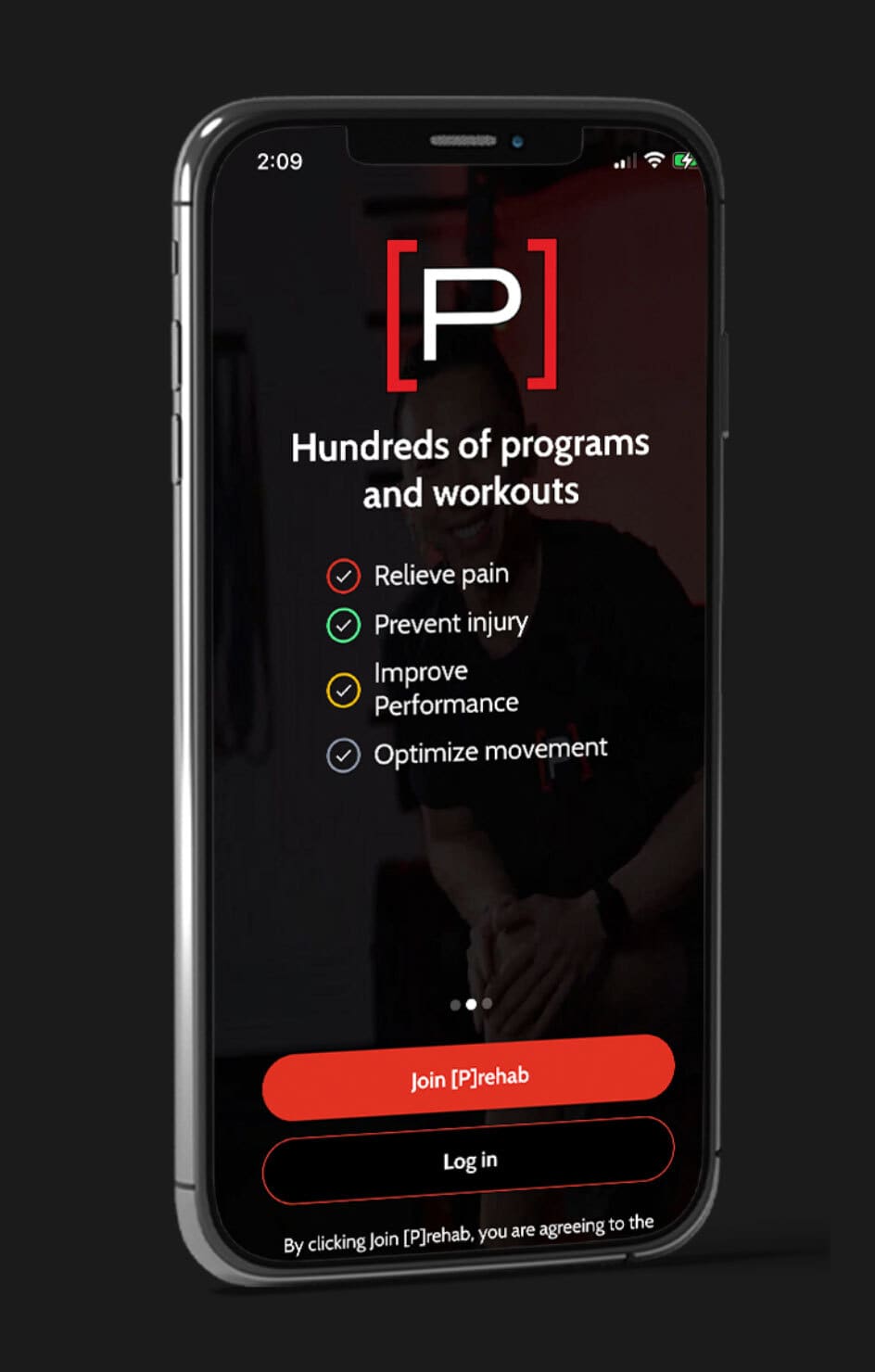Orthopedic surgeons and physical therapists work hand in hand to deliver the best possible care to their patients. Working in the field of orthopedic and sports, one of the most prevalent injuries we see are injuries to the meniscus. For that reason, we teamed up with a fellowship-trained and board-certified orthopedic surgeon to give you the most straightforward answers to all of your burning questions about the meniscus and meniscus surgery rehab. What is it? Do I have a tear? Do I need surgery? What is rehab like? We answer all of that and more in this multi-disciplinary and collaborative interview and article, touching all bases of meniscus surgery rehab!
Q&A With Orthopedic Surgeon Nima Mehran
Dr. Nima Mehran (@drnimamehran) joined us to discuss everything you need to know about what the meniscus is, what are the different types of meniscus injuries, and more importantly, we discuss meniscus surgery rehab.
Meniscus Surgery Rehab: Consider Conservative Efforts First!
As mentioned in the Q&A above, not all meniscus injuries require surgery, and actually, A LOT of meniscus injuries do very well managed conservatively without surgery. We have had hundreds of people achieve successful outcomes with our program. To find out if our program is right for you and to learn more information, click HERE!
What is The Meniscus?
The meniscus is a C-shaped tissue between your femur (thigh bone) and your tibia (shin bone). Each knee has a medial (inner side) meniscus and a lateral (outer side) meniscus. The meniscus is composed of water, collagen, proteins, and other cellular elements.
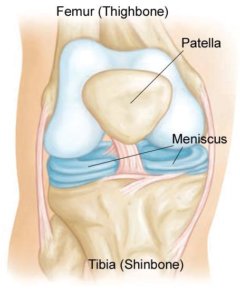
Via OrthoInfo
Normal Medial Meniscus – View From a Knee Arthroscopy
What is the Function of a Meniscus?
The meniscus is a shock absorber that helps optimize force transmission across the knee and protects the cartilage at the end of our femur and tibia. The medial meniscus is also a secondary stabilizer to the ACL as it can prevent anterior translation (forward shifting) of the tibia.
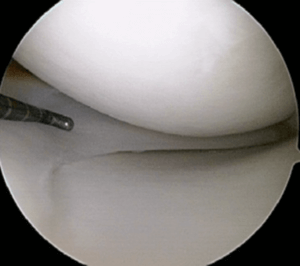
Normal Medial Meniscus from Dr. Nima Mehran
Does the Meniscus Have Good Healing Ability?
Tears in the outer 1/3 of the meniscus have healing potential because there is blood flow to that area. However, tears in the inner 2/3 generally do not heal well as a result of poor circulation.
Normal Lateral Meniscus – View From a Knee Arthroscopy
What are the Symptoms of Meniscus Tears?
- Pain at the joint line of the medial or lateral side.
- Swelling, can be intermittent.
- Mechanical symptoms such as locking or catching/clicking with pain.
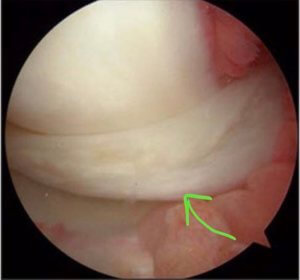
Bucket Handle Tear of the Medial Meniscus courtesy of Dr. Nima Mehran
Which Meniscus is Torn More Often?
Lateral meniscus tears are more common with acute ACL tears. However, medial meniscus tears are most common, especially in older patients with degenerative changes.
Bucket Handle Meniscus Tear – View From a Knee Arthroscopy
Do All Meniscus Tears Need Surgery?
No. All meniscus tears do not require surgery. Surgery is indicated if you have mechanical symptoms such as locking. Otherwise, you should try conservative management first. This includes NSAIDs (anti-inflammatories), physical therapy, and finally – injections. If you fail conservative therapy and do not have arthritis, you may then be a candidate for surgery.
Below, we will cover an extensive conservative, non-operative meniscal injury rehab program to help those that are not candidates for surgery!
Complex Medial Meniscus Tear
When do you Repair the Meniscus VS When do you Remove the Torn Tissue (Partial Meniscectomy)?
The goal is always to save as much meniscus as possible, but that is not always possible. Generally, we try to repair the meniscus in younger patients (<40), with more acute tears (<6 weeks), and depending on tear location and pattern (repair is much more successful if the tear is vertical and in the outer ⅓ of the meniscus). Additionally, in patients who are having an ACL reconstruction, repairs are more likely to succeed due to the bleeding created by the reconstruction. Tears in areas of poor blood flow and patterns that are not amenable to repair are more likely to be excised (cut out).
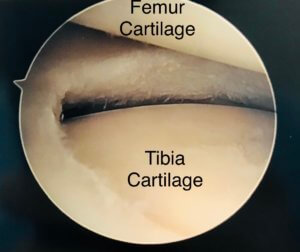
Partial Meniscectomy Performed by Dr. Nima Mehran
What Happens to My Knee if I Lose My Meniscus?
The more meniscus you lose, the less protection your knee has from the force it faces. As a result, your knee will develop arthritis at a much faster rate compared to your uninjured knee.
Conservative Non-Operative Meniscus Injury Rehab Program
As Dr. Nima Mehran mentioned, most meniscal injuries respond very well to physical therapy – as long as there are no mechanical symptoms present or complex meniscal injuries. Again, if you have mechanical symptoms like locking or catching/clicking with pain please go and see an orthopedic surgeon in your local area for a consultation. If you do NOT have mechanical symptoms, then check out the exercises below from a comprehensive early phase knee rehab program to help get your knee back on track! These exercises are just some of the MANY that you can perform. Furthermore, this program is just for early phase rehab, once you have progressed past exercises like these, you can perform just about ANY leg exercise, with an emphasis on the quadriceps!
- Think about your baseline level of pain. During your exercises, I am okay with discomfort/pain that is 1 point higher than your baseline. This rule also applies to any delayed soreness/pain later on in the day or the next day. For example, if your baseline knee discomfort is a 3/10, I am okay with 4/10 discomfort while exercising or after that, but no higher than 1 point over your baseline.
- If your discomfort does in fact increase during/after exercises, it must come back down to your baseline levels within 24 hours. If it does not drop back down to your baseline levels, then you pushed a little too hard and you need to decrease your volume, intensity, or range of motion in your exercises.
- Know that many meniscal injuries are in the back of the meniscus in an area called the posterior horn. This area is more sensitive to end range flexion or bending your knee. So be cautious with how much you bend your knee, especially when doing standing exercises like squats and lunges.
Quad Sets
Sample Meniscus Rehab Program Exercise
This quad setting exercises should form the foundation of your rehab plan. If you cannot strongly squeeze your quadriceps muscle and feel it contract, then you shouldn’t move onto any more advanced exercise. Must work on the basics before progressing!
Do These Knee Rehab Hacks at Home!
Knee Range of Motion Exercises
There is numerous way to improve your knee range of motion. Shown in the video are just some of the many ways we like to improve knee range of motion. In general, we can classify the exercises as either passive, active-assisted, or active range of motion exercises.
Many mensical injuries are sensitive to end range flexion – when you knee is fully bent. Be cautious with stretching in this direction and make sure to adhere to the rules of rehab principles from above!
Passive exercises rely simply on gravity to do the ‘stretching’ work. Exercises like supine knee props, bag hangs, or seated knee flexion all rely on gravity to stretch the knee. Active-assisted exercises incorporate active movement into the exercise, in addition to an external force like gravity, your other leg, or even another person’s body. An example of this is the supine knee flexion against wall exercise. Gravity is pushing Craig’s knee into flexion, while he contracts his hamstring at the same time to add a further stretch to the quads. Note that this exercise and others can easily be made passive if Craig doesn’t contract! Active range of motion exercises uses the agonist muscle to move into the range. Some examples of this are the long arc quad to achieve full knee extension (using quadriceps) or supine heel slide to achieve full knee flexion (hamstrings).
READ: Knee Surgery Prehab Exercises

Single Leg Balance
It doesn’t have to be this difficult or fancy by any means! Just simply standing on one leg and improving your knee proprioception is enough! Try with the knee locked out and with the knee slightly bent! We have 3+ months of progressive balance exercises in our Meniscus [P]rehab Program
The Prehab membership is the anti-barrier solution to keeping your body healthy. Access state-of-the-art physical therapy, fitness programs, and workouts online in the comforts of your own home or gym! Taking control of your health with exercise & education from the palm of your hand has never been easier. Get access to 50+ programs, 100+ unique workouts, and 3000+ exercises to build your own workout routines. Trial it for free, and learn how to get out of pain, avoid injury, and optimize your health with [P]rehab!
Terminal Knee Extensions (TKEs)
It’s extremely common to stop just shy of end-range extension at the top of reps. Naturally, end range is the “end” because it’s neurologically past whatever zone of ROM we are “comfortable” with. That being said, instead of spending an hour hanging out into passive extension or doing a more fancy drill to work terminal knee extension, just push and remind your clients to fully extend. Drive through their heel. Fully squeeze their quad. And feel a stretch at the top of every rep.
LISTEN: KNEE EXTENSION & GETTING BACK INTO THE GYM
Jumpstart Your Meniscus Rehab With Our Program!
Have you ever seen the 90’s old school pump up sneakers? The thought was by pumping air into the shoe the athlete would have a more of a custom fit allowing improved performance, support, and force absorption. Whether they actually did or not we can say the meniscus’ are the 90’s pump-up sneakers of the knee. They provide a better custom fit for the design of your knee and play a role in shock absorption. The difference between the two is that when an injury occurs you can’t reach down and just pump air into the area. However, we can utilize a more scientific approach by using movement as medicine to restore meniscus health!
About the Co-Author
Dr. Nima Mehran, M.D.
Orthopedic Surgeon & Sports Specialist
